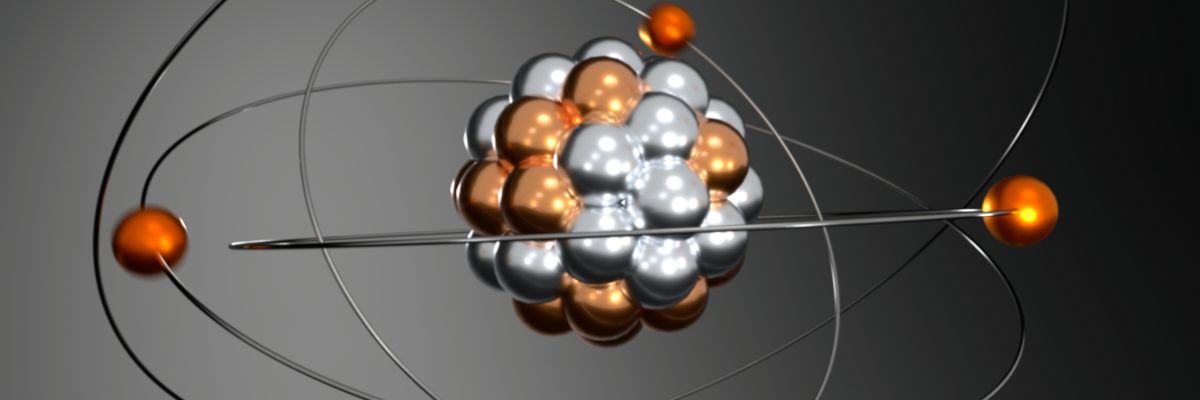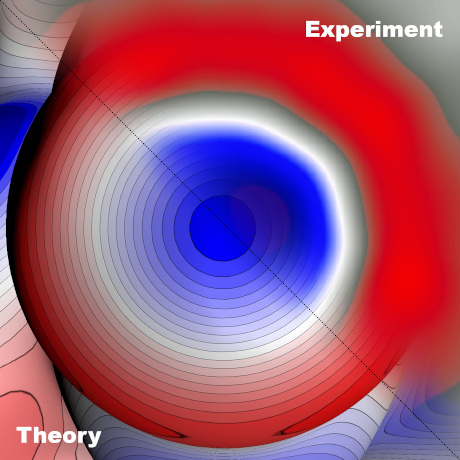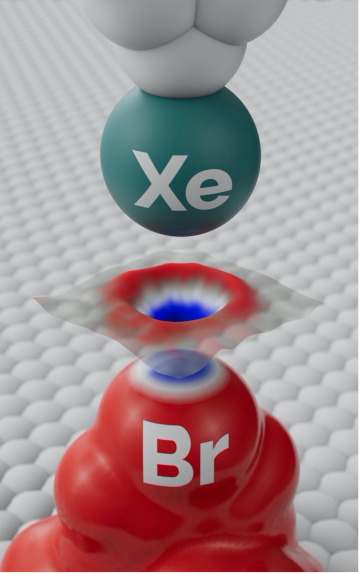
Czech scientists: the first to observe sigma-holes
01. 12. 2021
Czech scientists succeeded in confirming the presence of sigma-holes in atoms of halogen elements, which until now existed only in theory. They used their own improved method of scanning electron microscopy. That, for the first time, provided us some insight into the world of this subatomic phenomenon. The ground-breaking research, likened to the first direct observation of a black hole, was published in the Science journal.
The world of atoms is very specific and, to the layman, mysterious. The space filled with these building blocks of matter has always been outside our field of vision. However, what escapes the ordinary view has certainly not escaped the imaging capabilities of scanning electron microscopy. It has already enabled us to image atoms, but nothing smaller - and this seemed unlikely to change.
Yet, Czech scientists have presented a method based on Kelvin probe force microscopy that enabled them to see an asymmetric electron density distribution on single atoms of halogen elements, the so-called sigma-hole. A phenomenon that was predicted 30 years ago but never observed.
How to “see” the theory
Until now, the existence of the phenomenon known as a sigma-hole used to be demonstrated indirectly by X-ray crystal structures with a halogen bond. It revealed a surprising reality: chemically bonded halogen atoms of one molecule and nitrogen or oxygen atoms of a second molecule, which should repel one another, are in proximity and thus, they attract one another. This observation was in blatant contradiction with the premise that these atoms carry a homogenous negative charge and repel each other through electrostatic force.
“Confirming the existence of the theoretically predicted sigma-holes is not unlike observing black holes, which had never been seen until only two years ago despite being predicted in 1915 by the general theory of relativity,” explains Pavel Jelínek from the Institute of Physics of the Czech Academy of Sciences and CATRIN. “From this perspective, it’s not much of an exaggeration to say that the imaging of the sigma-hole represents a similar milestone at the atomic level,” he adds.

Experimental measurements confirmed the predictions about the shape of the sigma-hole precisely.
The scientists from the CATRIN of Palacký University in Olomouc, the Institute of Physics of the CAS, the Institute of Organic Chemistry and Biochemistry of the CAS, and the IT4Inovations Supercomputing Center at Technical University of Ostrava have succeeded in dramatically increasing the resolution capabilities of scanning microscopy by increasing the sensitivity of the already mentioned Kelvin probe force microscopy by functionalizing the tip probe with a single xenon atom.
“When I saw the sigma-hole for the first time, I was certainly sceptical, because it implied that we had overcome the resolution limit of the microscopes down to the subatomic level. Once I had accepted that, I felt both proud of our contribution in pushing the limits of the experiment and pleased to have opened a path for other researchers to go further and apply this knowledge in discovering new effects at the single-atom level,” says Bruno de la Torre of CATRIN and FZU.
The look of sigma-holes
The characteristic shape of the sigma-hole is formed by a positively charged crown surrounded by a belt of negative electron density. This inhomogeneous charge distribution leads to the formation of a halogen bond, which plays a key role in, among other things, supramolecular chemistry, including molecular crystal engineering, and in biological systems.

Illustration of the principle of the experiment: the tip of a scanning electron microscope tipped with a single xenon (Xe) atom is shown above. Below, a map showing the uneven distribution of atomic charge on a halogenated bromine (Br) atom. The blue crown shows the positive charge at the top of the atom surrounded by the negative electron cloud in red. In the middle is an experimental image of a sigma-hole shape.
“I’ve studied noncovalent interactions all my life, and it gives me great satisfaction that we can now observe something that previously, we could “see” only in theory and that the experimental measurements precisely confirm our theoretical premise of the existence and shape of the sigma-hole,” says computational chemist Pavel Hobza of the IOCB Prague. “It will allow us to better understand these interactions and to interpret them.”

Pavel Hobza
A precise knowledge of the electron charge distribution on atoms is necessary to understand the interactions between individual atoms and molecules, including chemical reactions. Thus, the new imaging method opens the door to the refinement of the material and structural properties of many physical, biological, and chemical systems affecting everyday life.
Text: Eliška Zvolánková and Jan Hanáček, Division of External Relations, CAS Centre of Administration and Operations
Photo: Shutterstock; Institute of Physics of the CAS, René Volfík
Read also
- A trapped state: The pandemic impact on public attitudes, trust, and behavior
- Aerial archaeology: Tracing the footsteps of our ancestors from the sky
- Archaeologists uncover ancient finds along Prague Ring Road
- Our microbiome largely depends on what we eat, says microbiologist Michal Kraus
- The ABCs of writing: Why did its invention mark a turning point for humankind?
- We learn, remember, forget… What can memory actually do? And can we outsmart it?
- New Center for Electron Microscopy in Brno opens its doors to global science
- The hidden lives of waste: What can we learn from waste workers and pickers?
- A unique lab is hidden right beneath Prague’s Vítkov Hill
- Renewables are a strategic investment in European security, scientists say
The Czech Academy of Sciences (the CAS)
The mission of the CAS
The primary mission of the CAS is to conduct research in a broad spectrum of natural, technical and social sciences as well as humanities. This research aims to advance progress of scientific knowledge at the international level, considering, however, the specific needs of the Czech society and the national culture.
President of the CAS
Prof. Eva Zažímalová has started her second term of office in May 2021. She is a respected scientist, and a Professor of Plant Anatomy and Physiology.
She is also a part of GCSA of the EU.